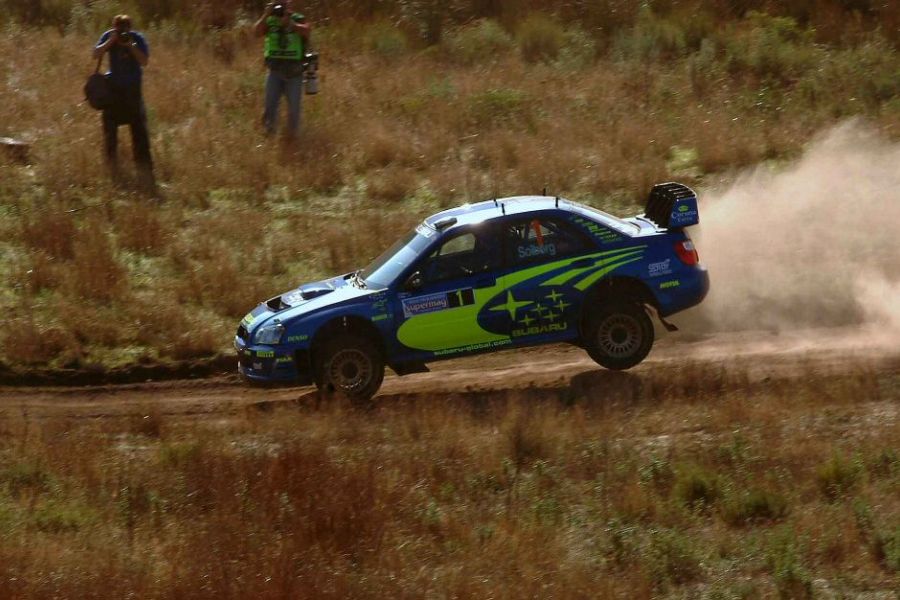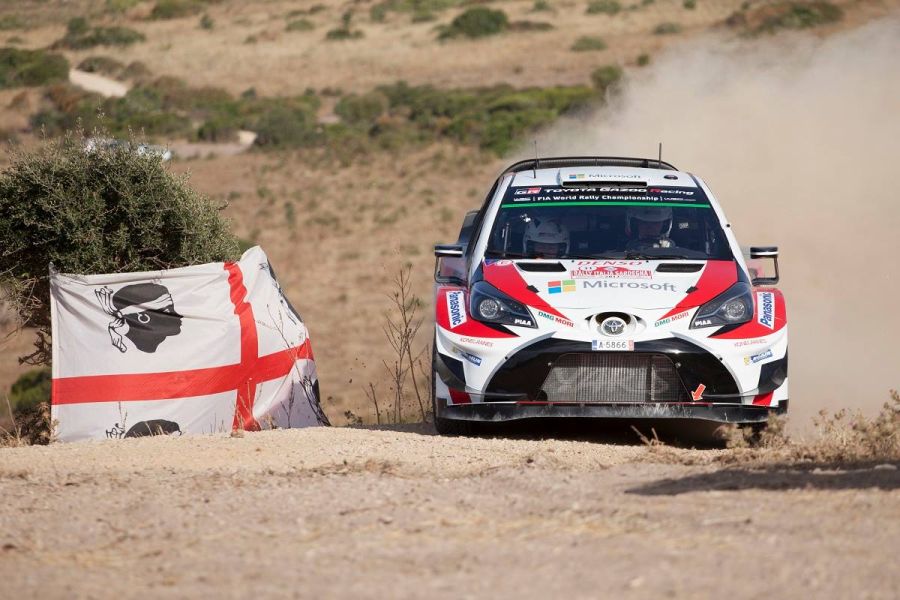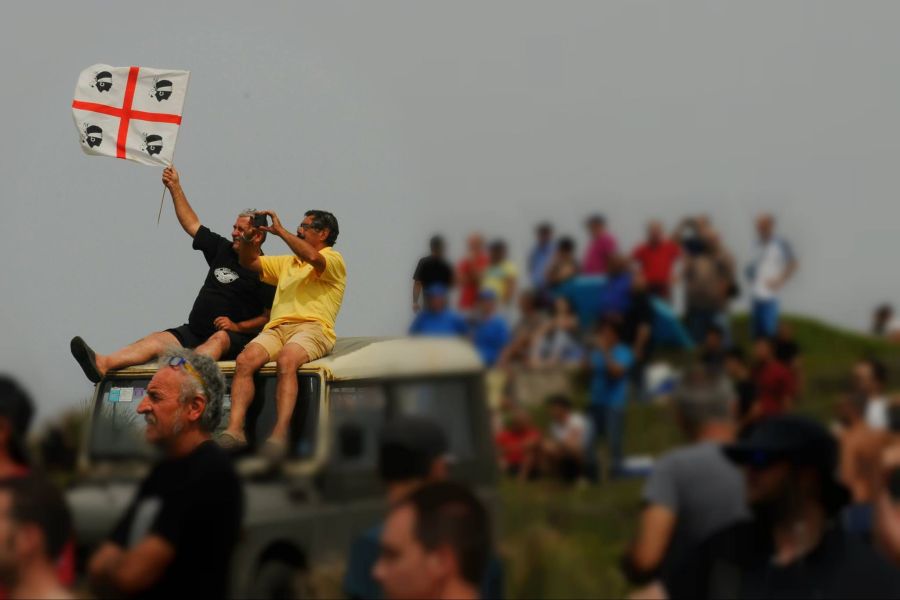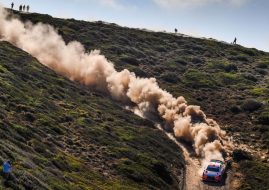Rally Italia Sardegna – a proper replacement for legendary Rally Sanremo
Rally Italia Sardegna (also known as Rally d’Italia Sardegna or Rally Italia Sardinia) is the rally event which is the fixture of the FIA World Rally Championship since 2004, making it one of the youngest events on the WRC calendar.
Previously, the Rallye Sanremo was the Italian WRC round from the inaugural season in 1973 to 2003. The Sardinian gravel rally became a part of the world’s premier rally competition in 2004 and stayed on the calendar since today, with only one exception in 2010 when the event was a part of the Intercontinental Rally Challenge.
In the short history of Rally Italia Sardegna, three drivers succeeded to win more than once – Sebastien Loeb was the winner four times, Sebastien Ogier has won three times and Thierry Neuville triumphed at Sardinia two times. The other winners were Petter Solberg, Marcus Gronholm, Juho Hanninen, Mikko Hirvonen and Ott Tanak.

Rally Italia Sardegna is based in Alghero
The 1st Rally Sardegna was the autumn event
After Sanremo was hosting Italian WRC round for decades, the championship visited Sardinia (Sardegna) for the first time in 2004.
The 1st Supermag Rally Italia Sardinia was the gravel rally and it took place in early October, same as the Rallye Sanremo in previous years. The rally base was in Olbia at the northeastern part of the island and the itinerary featured more than 380 kilometers of special stages.

Petter Solberg at 2004 Rally Italia Sardinia
Petter Solberg as the winner of the inaugural event
The inaugural Rally Italia Sardinia was the 13th round of the 16-event championship in which Sebastien Loeb captured his first WRC title. Sixty-seven crews participated in the event.
The winner at Sardinia was defending champion Petter Solberg in the #1 Subaru Impreza S10 WRC, defeating Loeb in a Citroen Xsara for more than two minutes. Loeb’s teammate Carlos Sainz was third. The winner in the Junior WRC category was Per-Gunnar Andersson (Suzuki Ignis S1600).

Sebastien Loeb’s Citroen Xsara at 2005 Rally Italia Sardegna
A new date for a rally in 2005, first win for Loeb
In 2005, the 2nd Supermag Rally Italia Sardinia was held as a spring rally on the last weekend of April. It was the fifth event of 16-round championship. Sebastien Loeb scored his first win at Sardinia in a Citroen Xsara WRC, ahead of Petter Solberg (Subaru) and Marcus Gronholm (Peugeot). The JWRC winner was Dani Sordo in a Citroen C2 S1600.
In 2006, the rally was seventh round of the championship and it took place in May. Loeb repeated a victory in a Citroen Xsara, ahead of Mikko Hirvonen (Ford) and Dani Sordo (Citroen). It was a massive event with 79 entries, the biggest number so far. The JWRC winner was Patrik Sandell in a Renault Clio S1600.

Marcus Gronholm and Timo Rautiainen bring the first win for Ford in 2007
Two wins for Ford in 2007 and 2009
Marcus Gronholm brought the first win to Ford in 2007, twenty-nine seconds ahead of his teammate Mikko Hirvonen. Citroen’s Dani Sordo was third. The JWRC winner was Urmo Aava in a Suzuki Swift S1600.
Ford celebrated one more double victory two years later, in 2009, with Jari-Matti Latvala and Mikko Hirvonen finishing in front. Petter Solberg was third in his private Citroen Xsara WRC. The JWRC winner was Martin Prokop in a Citroen C2 S1600. The rally also counted for PWRC classification, with Nasser Al-Attiyah taking a victory in a Subaru Impreza STi N14.

Rally Italia Sardegna is a part of the World Rally Championship since 2004
Third win for Loeb, Elena in 2008
Between two of Ford’s wins, Sebastien Loeb and his navigator Daniel Elena celebrated their third Sardinian victory in 2008, driving the #1 Citroen C4 WRC. He defeated Ford’s Latvala and Hirvonen by just ten and fifteen seconds respectively. The Junior WRC winner was Michal Kosciuszko in a Suzuki Swift S1600.
Due to big changes on the WRC calendar in 2010, when eight events were dropped out, Rally Sardegna became a part of the Intercontinental Rally Challenge. The rally winner was Juho Hanninen in a Škoda Fabia S2000.

Mikko Hirvonen and Jarmo Lehtinen are celebrating victory at 2012 Rally Italia Sardegna
Loeb’s fourth win in 2011, Hirvonen finally won in 2012
Rally Italia Sardegna returned to WRC as the fifth round of the championship in May 2011. Sebastien Loeb captured his fourth win, driving the #1 Citroen DS3 WRC. Mikko Hirvonen (Ford) and Petter Solberg (Citroen) joined him on a podium. Ott Tanak was the winner in SWRC category.
After five podiums at Sardinia, Mikko Hirvonen finally reached the top podium in 2012, winning the rally in the #2 Citroen DS3 WRC. Ford’s drivers Evgeny Novikov and Ott Tanak completed a podium. The Production WRC winner was Nicholas Fuchs.

Sebastien Ogier and Julien Ingrassia – three-time winners of Rally Italia Sardegna
Three consecutive wins for Sebastien Ogier and Volkswagen
Sebastien Ogier and Volkswagen Motorsport dominated in the championship from 2013 to 2015, taking also three consecutive wins at Sardinia in that period. In 2013, Ogier shared a podium with Thierry Neuville (Ford) and Jari-Matti Latvala (VW). Robert Kubica was the winner in the WRC2 category while Christian Riedemann triumphed in WRC3 class.
In 2014, when the rally base has been moved to Alghero on the northwestern coast, Ogier and Latvala were on a podium again, with Mads Ostberg (Citroen) taking the second place. The WRC2 winner was Lorenzo Bertelli. In 2015, Ogier captured his third win ahead of Hyundai’s Hayden Paddon and Thierry Neuville. The WRC2 winner was Yuriy Protasov.

Thierry Neuville’s victorious flight in 2016
Neuville’s wins in 2016 and 2018, Tanak’s maiden WRC victory in 2017
In 2016, Thierry Neuville defeated Volkswagen’s Latvala and Ogier for Hyundai Motorsport’s first win at Sardinia. The WRC2 winner was Teemu Suninen in a Škoda Fabia R5.
In 2017, when the new generation of World Rally Cars was introduced, Ott Tanak took his maiden overall victory in a Ford Fiesta WRC, six years after his win at the same event in a supporting category. Latvala and Neuville joined him on a podium.
In 2018, Thierry Neuville was on the top podium spot again, for the second time at the Italian island. He beat Sebastien Ogier by an incredible margin of just 0.7 seconds. Esapekka Lappi was third on the podium.

Ott Tanak at 2017 Rally Italia Sardegna
Photos: Rally Italia Sardegna, Vit Bezdekovsky, Petr Lusk, Giuseppe Depalmas/ewrc-results.com,










